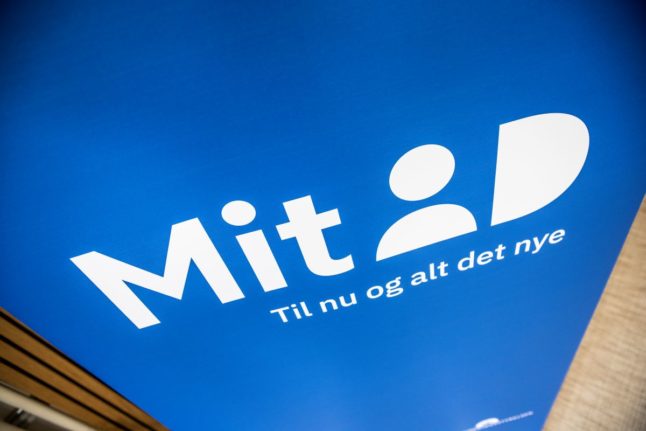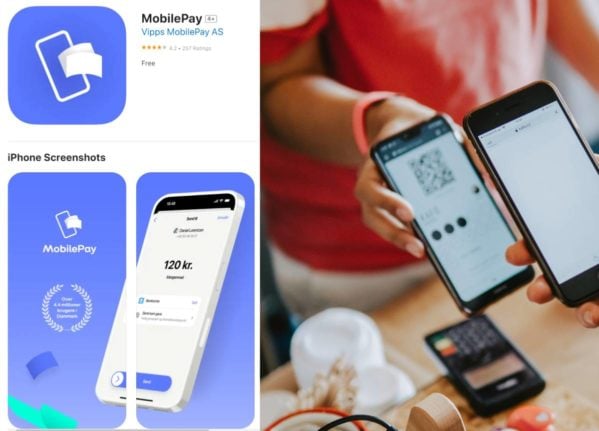What is MitID and who is behind it?
MitID is a digital identity app for mobile phones or tablets used in Denmark to prove identity when accessing government or commercial services online or in apps.
MitID replaced the old NemID system in September 2022, with NemID switched off for good on October 31st, 2023.
The app has been developed in a public-private partnership between Finans Danmark, which represents 70 Danish banks and insurers, and the Danish Agency for Digital Government, which is responsible for the digitalisation of national, regional and municipal government.
It was built by Nets, the Danish digital identity and payments company.
READ ALSO:
- How non-Danish passport holders can obtain MitID
- Can you get MitID if you no longer live in Denmark
- Goodbye NemID: Danish digital ID shuts down for good
When do you need to have MitID in Denmark?
You need MitID for pretty much everything you do online in Denmark.
- Danish banks such as Danske Bank, Jyske Bank, Vestjysk Bank, Nykredit Bank, Sydbank, and Nordea require MitID to log in to their apps and websites.
- MobilePay, the digital payment system Danes use to transfer money between one another and to pay for things online, requires MitID when you sign up, register or change card details, or change the bank account you use to send or receive money.
- Shopping online. If you buy anything online, you will often need to approve the payment with your bank using MitID.
- Borger.dk, the portal to online government services and information, requires MitID to log in.
- Digital post. The secure digital post systems, such as e-boks.dk, used by government agencies to communicate with Danish citizens and residents, require MitID to log in.
- The Danish Tax Agency requires a MitID login if you want to check your tax details, submit forms, or pay tax.
- Healthcare. Denmark’s national health website, sundhed.dk, requires a MitID login to make appointments with your regional health authority, renew prescriptions, and view test results, among other services.
- Pensions. Denmark’s pension website, pensionsinfo.dk, requires a login with MitID to view your pension and make any changes to it.
- Education. You need MitID to apply for courses at schools, adult education colleges or universities on Denmark’s www.optagelse.dk applications website.
Who is eligible for MitID?
Anyone with a valid passport over the age of 13 can obtain a MitID, so long as they are either a Danish citizen, have a Danish residency permit, or have a permit to study in Denmark.
You do not need to have a Danish passport, although not all foreign passports will work with the app. If yours doesn’t, then you will need to visit your local Borgerservice office to identify yourself in person.
You also do not need to have a CPR number, the Danish equivalent of a social security number. If you don’t have a CPR number, you will need to obtain an 8-digit ‘P code’ to log into the app.These can be obtained by contacting your bank, by contacting MitID Support or by visiting your local Borgerservice centre.
How do you get MitID?
It is only possible get MitID using a foreign passport if the passport has a chip. If it does, it will have this symbol stamped on the front of it:

Your passport also needs to be from a UN member state and, obviously, it needs to still be valid.
You need to make sure that your phone is a smartphone capable of reading NFC codes.
Then you need to download the app from the Google Play or Apple store, open it, and use the app to scan the code beginning with P on your passport.
After this, you need to read the chip with your phone, and, finally, you need to scan your face with the app.
The next stage is to create a user ID, which you choose yourself and which is then connected to your phone number.
Finally, you need to validate this user ID by filling in a number sent by text message to your phone, after which, with any luck, you should have created your new MitID.
You can find the official guide in English to doing this here, and a troubleshooting guide for what to do if it doesn’t work here.
What happens if you lose your phone with MitID on it?
The MitID website recommends that users create a backup MitID on a tablet or second phone, so that they can still access essential services if they lose their phone or accidentally delete the app.
Users who get new phones also sometimes wipe their old phone before using their existing MitID to activate the MitID on their new phone.
You can get an authentication code for a spare backup MitID by following the instructions here.
Can you use MitID without a phone?
If you for whatever reason are unable or unwilling to own or use a smartphone, you can instead use an MitID authenticator, which you can order here. You will need to visit your local Borgerservice centre to activate it.



 Please whitelist us to continue reading.
Please whitelist us to continue reading.
Member comments